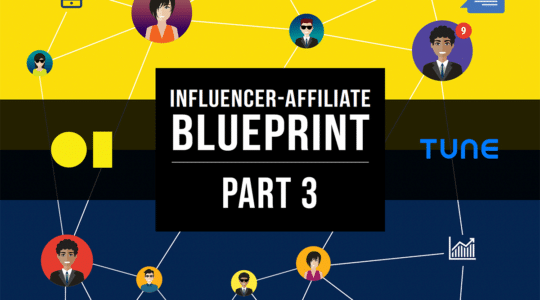
You’re working hard and fast, just like the rest of the mobile marketing industry. We know the last thing you want is a confusing word putting a damper on your workflow or campaigns. Having a solid understanding of jargon and acronyms is one way to stay on top of industry news and trends. Below are 16 terms we hear marketers use frequently, defined in plain terms.
A/B testing: An optimization methodology that compares two versions of something against each other to determine which performs better. For instance, you can compare how different headlines or images perform by promoting each to a small audience and then deploying the winning variation to everyone in the app store.
Affiliate: An individual or company that promotes an advertiser’s product or service through an ad. Affiliates receive a cut or flat payout once the ad performs by being clicked or viewed. Affiliates can post ads in the form of links, banner, or text ads.
Artificial intelligence (AI): In layman terms, this is intelligence that is exhibited by machines. For instance, first-person shooter video games, like Call of Duty 4, use artificial intelligence when users play against the game — the bots can shoot the person playing and avoid their attacks, simulating playing against another person. In terms of marketing, Google uses RankBrain — an artificial intelligence system that helps them understand search queries.
CTR (Click-through Rate): The ratio of clicks to impressions, this measure helps advertisers understand the effectiveness of their pay-per-click campaigns. CTR = clicks / impressions.
Controlled rollouts: Deploying a new feature to a small audience. For example, if you have a new feature and want to see how users respond to it, you can send it to 5% of your audience. Once you receive data back on it, you can tweak if it necessary before deploying to everyone.
Deep linking: The action of sending existing users (i.e. users who have already installed the app) to a specific screen within a mobile app instead of the app’s default/main screen or app store landing page. TUNE’s deep linking technology includes the ability to detect new and existing users and only serves the deep link to existing users, while sending new users to the app store to download the respective app.
Deferred deep linking: Extends basic deep linking with the ability to send new users (i.e. users who have not yet installed the app) to a specific screen within a mobile app. This is accomplished by persisting the deep link until after the user has installed the mobile app and is launched on first app open. Learn how TUNE handles deferred deep linking and get instructions on how to implement it in your app.
Events: Downstream in-app actions that occur after the initial app install. Events include actions such as registrations and purchases. The completion of in-app events is one of the primary indicators of user engagement for an app. Measurement of revenue tied to those events allows TUNE to provide details on a user’s lifetime value (LTV). TUNE’s event measurement comes pre-packaged with 17 pre-defined events you can choose from, and also includes the ability to measure any custom event and associated context your app may include.
Foreground/background: An app is foregrounded when the user brings it up and is actively using it. It’s backgrounded when they’ve gone to their home screen and stopped using it.
IDFA/IFA: Apple’s identifier for advertisers. An alphanumeric string that is unique to each device that you can use for serving advertisements, as well as a flag that indicates if a user has enabled the limit ad tracking feature. TUNE uses the IDFA as a unique identifier to attribute conversions to the corresponding traffic source. This identifier looks like this: 6CCD6E9C-5BE7-466B-9B6E-9BC673847337
In-app purchase (IAP): A transaction that occurs within the app, such as a user purchasing gems to advance a level in a mobile gaming app.
Limit ad tracking (LAT): LAT is a user-enabled setting on iOS, Android, and Microsoft, that indicates the user does not want to be targeted for advertising. Developers must follow the LAT setting per the developer requirements of these respective platforms.
Multi-touch attribution: When a user clicks on an ad and then makes a purchase, the advertiser pays the publisher who showed them that ad. But what if the user saw the ad in several places and then eventually clicked after the third time seeing it — who gets the credit? Multi-touch attribution works to split the revenue credit between all the sources that showed the user that ad before they clicked and purchase. Multi-touch can also refer to users seeing an ad across several of their devices before making a purchase.
Postback: A URL request from TUNE to a third-party server that notifies them of a conversion event (install, in-app event, etc.). Although the term “postback” implies a POST method for the URL request, TUNE loads postback URLs with the GET method by default.
Retention: Keeping the app users that have downloaded you app. There is one strategy to convince users to download your app and a whole different one to convince them to stay and be engaged in your app.
Stickiness: A technology that clients fully embrace and “stick” to. Think of apps on your smartphone that installed a long time ago, use nearly every day, and have never deleted. Those apps are sticky and stable.
Universal linking: iOS links provide users with a smooth experience. Universal links can act as deep links, deferred deep links, or standard tracking link. The advertiser determines the action of the link based on information known about the user’s mobile device. Say you are in an app and see an ad for a great deal on Expedia. The advertiser’s intention is for you to purchase the flight. If you have the app already, the Universal link can act as a deep link and send you directly to the page within the app where you can make the purchase. If you do not have the app, the Universal link will act as a deferred deep link and take you to the app store. Once you’ve downloaded the link it will take you to the landing page within the app to purchase the flight deal. Another possibility is that the ad will take you to the mobile web page if you do not have the app, in order to minimize steps in the buying process. If the advertiser’s intention was solely for you to download the app if you didn’t have it, the Universal link would take you to the app store to download the Expedia app.
This blog is the third in a series defining mobile marketing terms. Check out “The beginner’s guide to mobile marketing terms” and “13 words every mobile marketers should know” for volumes I and II.
Author
Becky is the Senior Content Marketing Manager at TUNE. Before TUNE, she handled content strategy and marketing communications at several tech startups in the Bay Area. Becky received her bachelor's degree in English from Wake Forest University. After a decade in San Francisco and Seattle, she has returned home to Charleston, SC, where you can find her strolling through Hampton Park with her pup and enjoying the simple things between adventures with friends and family.




Leave a Reply
You must be logged in to post a comment.